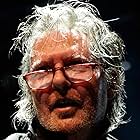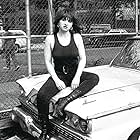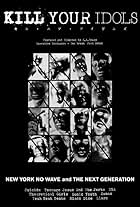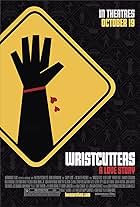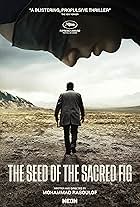NYC's no wave movement of the 1970s and the art punk revival that happened there 30 years later frame a discussion about the crisis of innovation in an age of commodified nostalgia.NYC's no wave movement of the 1970s and the art punk revival that happened there 30 years later frame a discussion about the crisis of innovation in an age of commodified nostalgia.NYC's no wave movement of the 1970s and the art punk revival that happened there 30 years later frame a discussion about the crisis of innovation in an age of commodified nostalgia.
- Awards
- 1 win & 1 nomination
Matthew McAuley
- Self
- (as Matt McAuley)
Storyline
Did you know
- TriviaThe title of the film is inspired by the Sonic Youth song "Kill Yr Idols".
- Crazy creditsSHOWN AT THE BEGINNING: "Here in this family album lies the salt family of Lot." -Marina Tsvetaeva
- ConnectionsFeatures Punking Out (1978)
- SoundtracksA Prayer for My Death
by Foetus
Courtesy of J.G. Thirlwell / Thirsty Ear
Featured review
In the first half of this great documentary, we meet the former members of the 70's and early '80s New York no-wave scene which included Suicide, Lydia Lunch, DNA, Theoretical Girls, Teenage Jesus and the Jerks, Swans, and Sonic Youth. We learn how truly underground and chaotic their thing was; they took punk to an extreme that the more familiar NY bands (Dead Boys, Ramones, etc) never dared. This was anti-music, atonal and extreme, but very much in step with the punk ethos of breaking down the barrier between artist and audience. These were some truly desperate and alienated human beings raging out with the only means available to them. The docu features original on-stage footage filmed in tiny clubs as they shrieked, abused guitars, and pounded away in desperation. Whether or not you like that sort of thing, the scene's urgency and authenticity spoke for itself.
Fast forward to the 21st century. For some reason the post-punk/no-wave shtick is fashionable again, and we meet the Yeah Yeah Yeahs, the Liars, Black Dice, and a few others. This is a selection of artists who happen to be in line, on some level, with the no-wave aesthetic- but as anyone who's been following recent pop trends knows, they exist within a larger musical and cultural context obsessed with late 70s/ early 80s rock culture in general. They tell us a little about gigging it the Apple today and how impressed they are with their forebears. That's about all.
However, the original interviewees haven't gone away; somehow they're still alive and it's when they express their opinions on the new scene that the film really changes pace.
Yes, the film's second half amounts to one of the most severe ass-beatings ever recorded. They're quite remorseless; Lydia Lunch is particularly scorching in her assessment. Pretty much all of the original interviewees express their contempt for current-day trendies and scenesters who have nothing to say and simply want to feed off the past (whilst wallowing in the fashion, of course). To be sure, the two scenes stand in sharp contrast; the old zeitgeist of alienation, risks, originality, and zero recognition is a bit different from today's skin-deep New York that can spawn the Strokes and hype them up into superstar status before anyone's heard them. It was amusing for me to see this film at a film festival because I saw it in a room full of young hipsters who came expecting to be flattered and instead must have felt that they received a big slap in the face. There was a palpable tension in the air
Fortunately the documentary doesn't set it all up as us vs. them, old scene vs. new scene. A glimpse of hope comes from the band Gogol Bordello and its leader Eugene Hutz, who emigrated from the Ukraine and play weird gypsy punk cabaret music in a downtown Manhattan joint. They're the only one of the crop of young bands featured here that seems to agree with Lunch and the rest that culture should look forward instead of backward.
Anyway, as you walk out of the theatre, your heart torn out and your punky haircut about to collapse in a shambles of postmodern anxiety, don't be too hard on yourself. No, let me rephrase that. Be as hard on yourself as possible and don't try to escape the film's point; it'll come back to haunt you. But, it's not too late to change. When you wake up the next morning, you just might find the courage to do something that's actually original.
Fast forward to the 21st century. For some reason the post-punk/no-wave shtick is fashionable again, and we meet the Yeah Yeah Yeahs, the Liars, Black Dice, and a few others. This is a selection of artists who happen to be in line, on some level, with the no-wave aesthetic- but as anyone who's been following recent pop trends knows, they exist within a larger musical and cultural context obsessed with late 70s/ early 80s rock culture in general. They tell us a little about gigging it the Apple today and how impressed they are with their forebears. That's about all.
However, the original interviewees haven't gone away; somehow they're still alive and it's when they express their opinions on the new scene that the film really changes pace.
Yes, the film's second half amounts to one of the most severe ass-beatings ever recorded. They're quite remorseless; Lydia Lunch is particularly scorching in her assessment. Pretty much all of the original interviewees express their contempt for current-day trendies and scenesters who have nothing to say and simply want to feed off the past (whilst wallowing in the fashion, of course). To be sure, the two scenes stand in sharp contrast; the old zeitgeist of alienation, risks, originality, and zero recognition is a bit different from today's skin-deep New York that can spawn the Strokes and hype them up into superstar status before anyone's heard them. It was amusing for me to see this film at a film festival because I saw it in a room full of young hipsters who came expecting to be flattered and instead must have felt that they received a big slap in the face. There was a palpable tension in the air
Fortunately the documentary doesn't set it all up as us vs. them, old scene vs. new scene. A glimpse of hope comes from the band Gogol Bordello and its leader Eugene Hutz, who emigrated from the Ukraine and play weird gypsy punk cabaret music in a downtown Manhattan joint. They're the only one of the crop of young bands featured here that seems to agree with Lunch and the rest that culture should look forward instead of backward.
Anyway, as you walk out of the theatre, your heart torn out and your punky haircut about to collapse in a shambles of postmodern anxiety, don't be too hard on yourself. No, let me rephrase that. Be as hard on yourself as possible and don't try to escape the film's point; it'll come back to haunt you. But, it's not too late to change. When you wake up the next morning, you just might find the courage to do something that's actually original.
- musidorus-1
- Mar 31, 2006
- Permalink
Details
- Release date
- Country of origin
- Language
- Also known as
- Убей своих кумиров
- Production company
- See more company credits at IMDbPro
Box office
- Gross US & Canada
- $7,753
- Opening weekend US & Canada
- $3,274
- Jul 9, 2006
- Gross worldwide
- $7,753
- Runtime1 hour 15 minutes
- Color
Contribute to this page
Suggest an edit or add missing content








